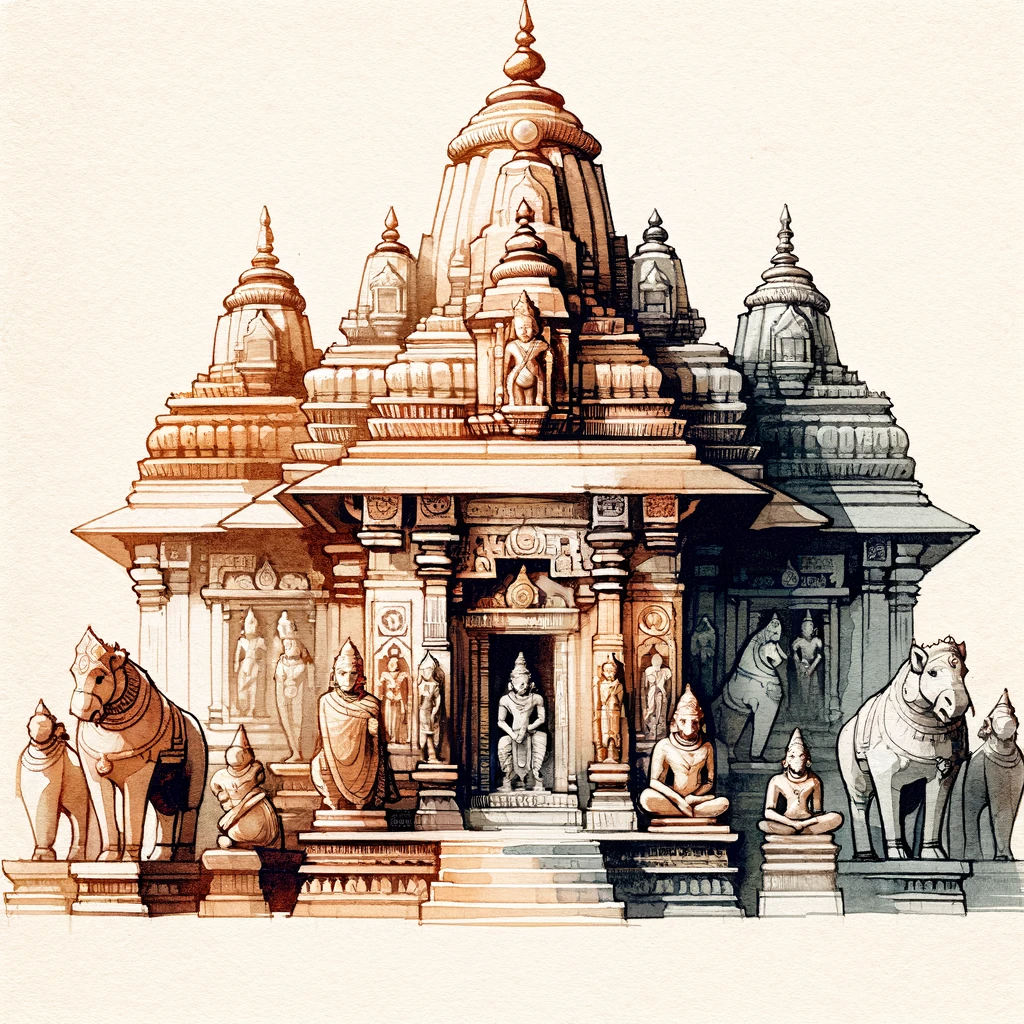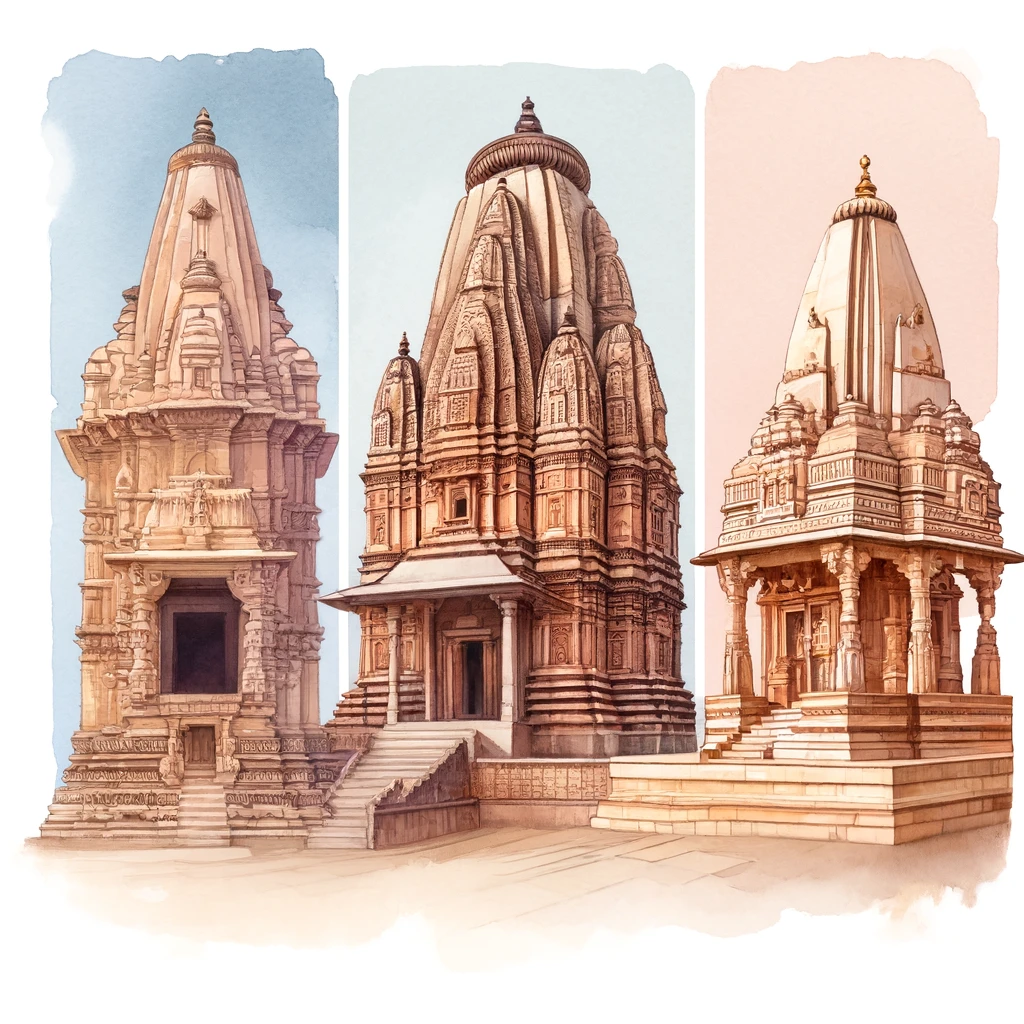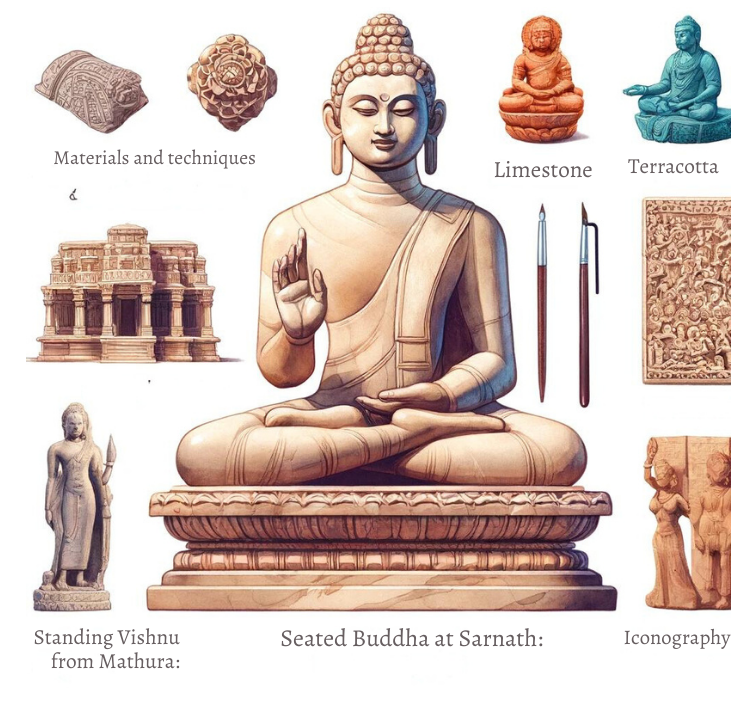The Gupta Period, often referred to as the “Golden Age of India,” was marked by significant achievements in various fields, including art and architecture. This era, spanning from approximately 320 CE to 550 CE, saw the development of distinctive styles in temple architecture, sculpture, and painting. These artistic and architectural advancements not only reflected the cultural and religious milieu of the time but also laid the foundation for future developments in Indian art.

Temple Architecture (Gupta Temples)
The Gupta period marked the beginning of temple architecture in India, with the construction of some of the earliest known Hindu temples. These temples set the architectural principles that would influence subsequent temple designs throughout the Indian subcontinent.
Key Features of Gupta Temples
- Simple and Elegant Design:
- Early Gupta temples were relatively simple in design, characterized by a square sanctum (garbhagriha) housing the main deity.
- The temples often had a flat or slightly sloping roof, with little external ornamentation.
- Development of Shikhara:
- The Gupta period saw the initial development of the shikhara (spire), which would become a defining feature of North Indian temples. However, in the Gupta temples, the shikhara was typically low and rudimentary.
- Use of Stone:
- The Gupta architects primarily used stone for temple construction, moving away from the earlier use of wood and brick.
- The transition to stone allowed for more durable and intricate carvings.
Notable Gupta Temples

Dashavatara Temple, Deogarh
- Located in Uttar Pradesh, the Dashavatara Temple is one of the finest examples of Gupta temple architecture.
- Dedicated to Vishnu, the temple features a square sanctum, a portico, and beautifully carved panels depicting scenes from Hindu mythology, including the ten avatars (dashavatara) of Vishnu.
Temple at Bhitargaon
- Situated in Uttar Pradesh, the Bhitargaon temple is an early brick temple from the Gupta period, known for its towering shikhara and intricate brickwork.
- It is one of the few surviving examples of brick temples from this era.
Parvati Temple, Nachna
- The Parvati Temple in Madhya Pradesh is another significant Gupta temple, characterized by its simple yet elegant structure.
- The temple features a sanctum with a flat roof and beautifully carved doorways.
Sculpture and Painting
The Gupta period is renowned for its exquisite sculptures and paintings, which reflect the era’s aesthetic values and religious themes. Gupta art is characterized by its refinement, grace, and naturalism.
Sculpture
- Materials and Techniques:
- Gupta sculptors primarily used sandstone, limestone, and terracotta for their works.
- They developed advanced carving techniques, creating sculptures with intricate details and lifelike expressions.
- Iconography:
- The Gupta period saw the standardization of Hindu iconography, with well-defined representations of deities such as Vishnu, Shiva, and Shakti.
- Buddhist and Jain iconography also flourished, with numerous sculptures of Buddha and Tirthankaras (Jain spiritual teachers).
- Notable Sculptures:
- Seated Buddha at Sarnath:
- This sculpture, housed in the Sarnath Museum, is a masterpiece of Gupta art. The Buddha is depicted in the dharma chakra mudra (teaching gesture), with a serene and compassionate expression.
- Standing Vishnu from Mathura:
- This sandstone sculpture of Vishnu, found in Mathura, exemplifies the elegance and refinement of Gupta sculpture. Vishnu is depicted with four arms, holding his traditional attributes.
- Seated Buddha at Sarnath:

Painting
- Ajanta Caves:
- The Ajanta Caves in Maharashtra are a series of rock-cut Buddhist cave monuments that contain some of the finest examples of Gupta period paintings.
- The murals in the Ajanta Caves depict scenes from the Jataka tales (stories of the Buddha’s previous lives), as well as various aspects of contemporary life, nature, and religious themes.
- Techniques and Styles:
- Gupta painters used natural pigments and fresco techniques, applying colors to wet plaster surfaces.
- The paintings capture the subtleties of human expressions and emotions.
- Themes:
- Religious themes dominate Gupta paintings, with a focus on Buddhist subjects and the life of the Buddha.
- The paintings also illustrate scenes from daily life, including court scenes, domestic activities, and depictions of flora and fauna.
Conclusion
The Gupta period’s contributions to art and architecture represent a pinnacle in ancient Indian cultural history. The development of temple architecture during this era set the stage for future architectural innovations. The refined sculptures and exquisite paintings reflect the aesthetic sensibilities and religious devotion of the time. For UPSC aspirants, understanding the artistic and architectural achievements of the Gupta period is essential for appreciating the cultural richness and historical significance of this golden era in Indian history.

